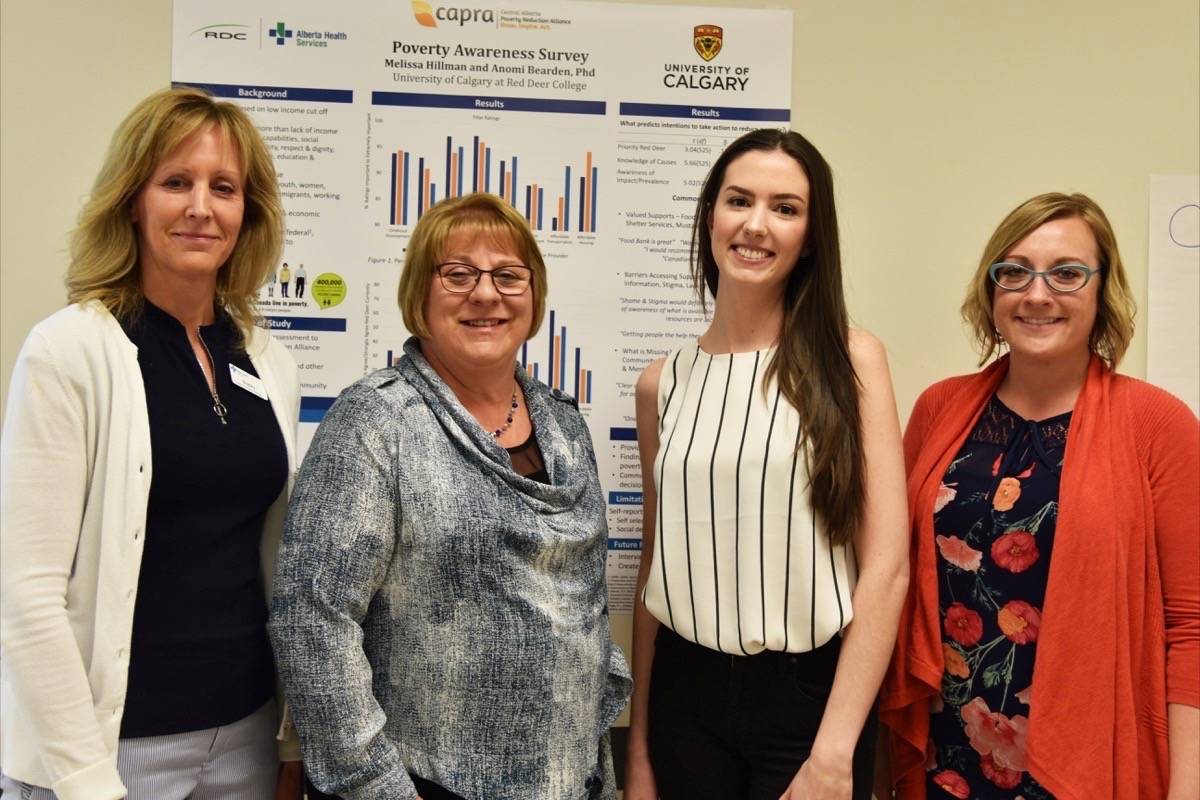Increasing public awareness about the real definitions of poverty will be key to reducing the problem in Red Deer, according to the results of the Poverty Awareness Survey.
“I think a big aspect to addressing poverty is just talking about it—a lot of people aren’t aware of it, so just starting those conversations,” said Melissa Hillman, project lead at an event presenting the survey’s findings at the G.H. Dawe Community Centre on April 30th.
The Central Alberta Poverty Reduction Alliance (CAPRA) conducted the survey in conjunction with Red Deer College and other community partners as a first step towards the City developing a Poverty Reduction Strategy and a means to inform community groups about local perspectives.
The survey was organized by members of CAPRA—Diana Souveny, City of Red Deer social planner and Shelley Dallas-Smith, community health promotions facilitator for Alberta Health Services—who partnered with Anomi Bearden, a psychology professor at Red Deer College who oversaw the project led by Hillman, a fourth-year psychology student.
The survey was distributed to 523 participants who self-identified as community members, having ‘lived’ experience with poverty or service providers working in poverty management. Participants represented a diverse socio-economic, age, marital status, employment and educational level.
The City provided CAPRA with funding to conduct a needs assessment. According to Souveny this is a really good foundational piece in that process.
Vibrant Red Deer Needs Assessment Council will provide use of the survey to provide CAPRA with recommendations for the development of a poverty reduction strategy by the end of June.
Larger centres like Edmonton and Calgary already have municipally run Poverty Reduction Strategies in place.
CAPRA will then contract someone to develop that needs assessment based on the recommendations and data collected. By December 2019 this needs assessment will be given to the City to use as a basis for a Poverty Reduction Strategy.
“We would like to see a community-led Poverty Reduction Strategy for Red Deer,” Souveny said. She explained that they are aiming for a strategy that is not organized by the municipal government, but one that all citizens can see themselves being involved.
She believes a big part of the success of such a program is Red Deerians gaining a better understanding about what poverty really looks like. She explained that it is not just the homeless person sleeping on the street, but also includes new immigrants, students and single mothers.
Hillman said most of the findings were consistent with what they expected to find. There were, however, some interesting discrepancies between participants who self identified as having “lived experience” with poverty as opposed to those who did not.
There were significant gaps between the percentage of community members and those with lived experience who thought people in Red Deer had fair access to education, were healthy, were valued, respected, treated fairly, belonged and connected to others and have access to affordable housing and transportation.
Participants from all three of these groups agreed that child development, education, justice and affordable housing were very important components of poverty reduction.
About 30 per cent of participants did not know that 1 in 10 people live in poverty in Red Deer.
The survey also revealed that the broader an understanding a person has about what poverty really looks like, the more likely they are to have an interest in taking action to prevent it.
“I think that Red Deer is a great community and I think that we need to just focus on helping one another,” said Hillman, who grew up in Red Deer and recently graduated from RDC with her degree in Psychology.



